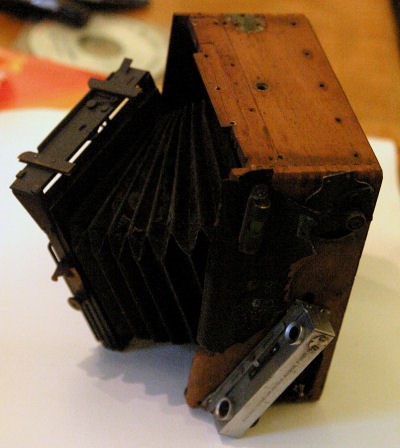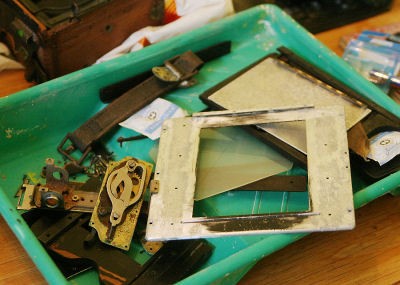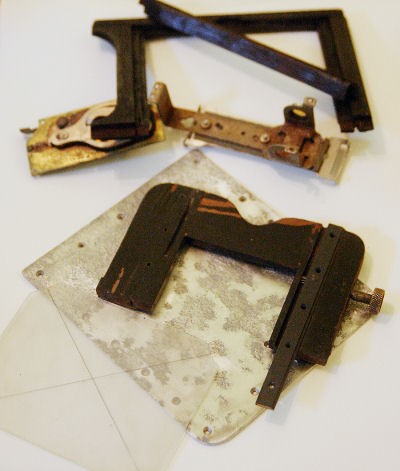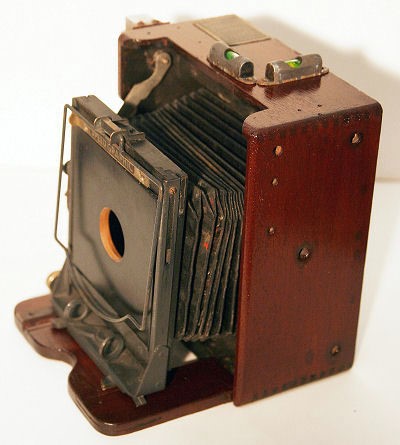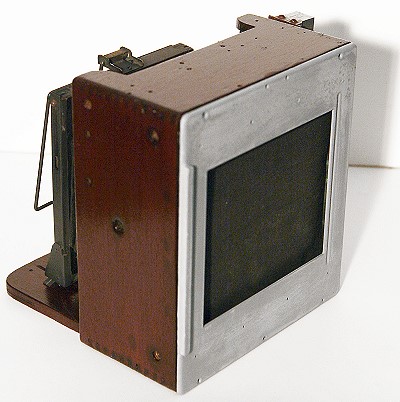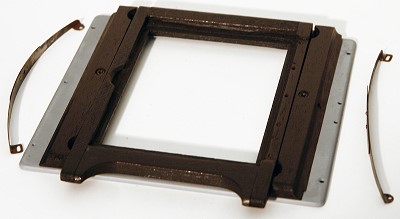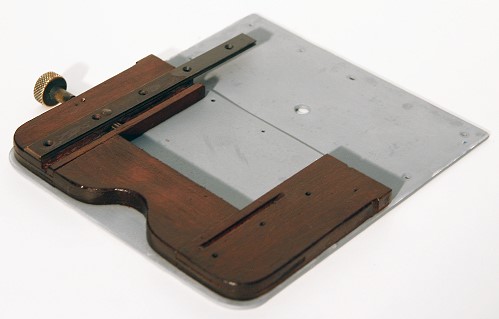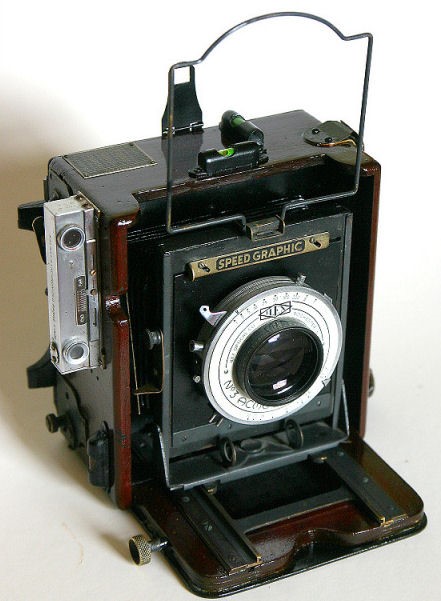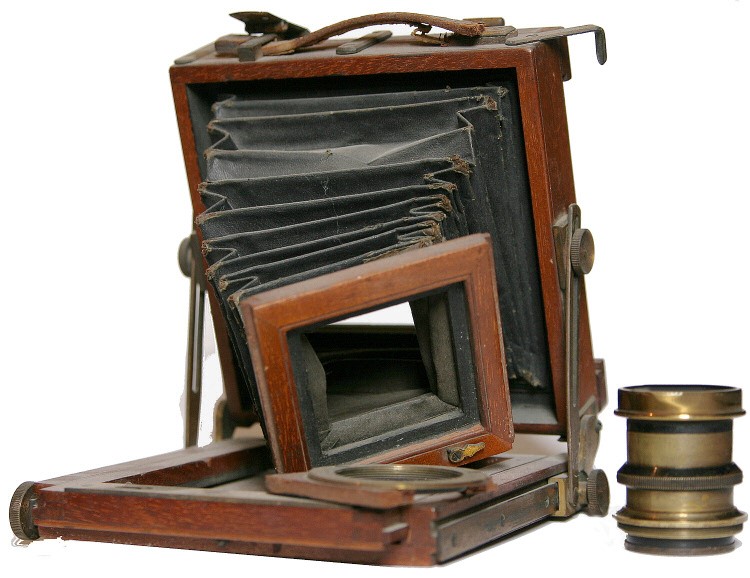
Back around 1992/3 I was given this camera by a photographer friend, she said it's no use to me - you have it. It sat like this on a mantle piece until May 2010 when I decided on the spur of the moment to try and restore it.
There was no front standard, a broken lens board, bellows that had seen their last days, a broken carrying strap, no focus screen and some missing screws & brass parts. A challenge.
Stripping the camera down to it's components, removing the bellows and all the screws and brass fittings, I cleaned the woodwork, sanded it down with #400 sand paper and then applied two coats of French polish. I'd repaired and polished the lens board some months before while restring a Thornton Pickard shutter so already knew how the camera might look.
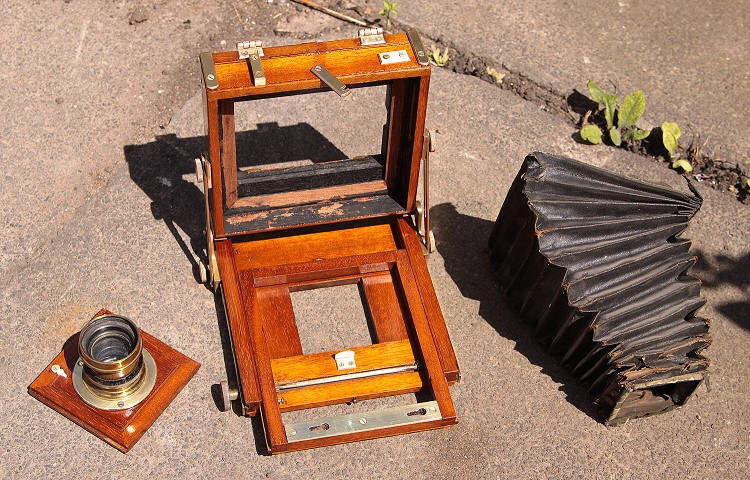
With the French polish dry and the Brass work polished the camera was re-assembled. The next stage was replacing the front standard, bellows and the missing parts.
First it was necessary to ascertain the shape and type of fittings needed for the construction of new front standard. Looking in photography books from around 1900 there were plenty of wooden folding cameras most larger or too different, but one Half-Plate camera was obviously very similar, and in addition the space the standard has to fit when folded constrains the overall dimensions, having to fit with the stabiliser bar etc.
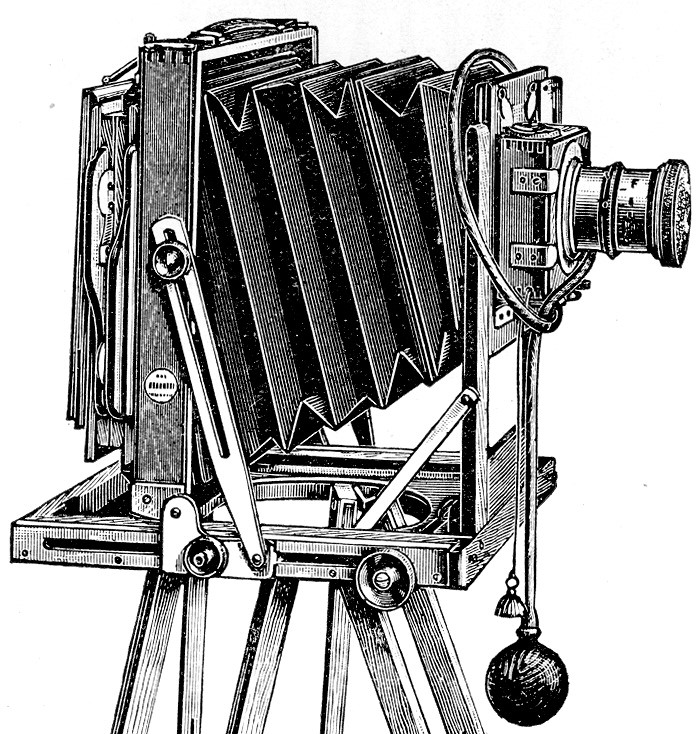
The Pembroke Outfit Half Plate camera (1902)
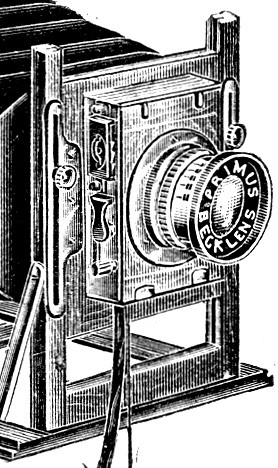
The front standard of a W. Butcher & Sons, Half plate camera, showing how the rise & fall is controlled. However on this Quarter plate camera the brass plate is attached to the standard (the opposite way around) and the knob for tightening is on the bottom of the lens board panel. It was then possible to have a new standard constructed based on information gleaned from these two images and the dimensional constraint mentioned above. A local joiners made the new standard fro oak, cutting a grooved profile to allow the lens board to rise.fall.
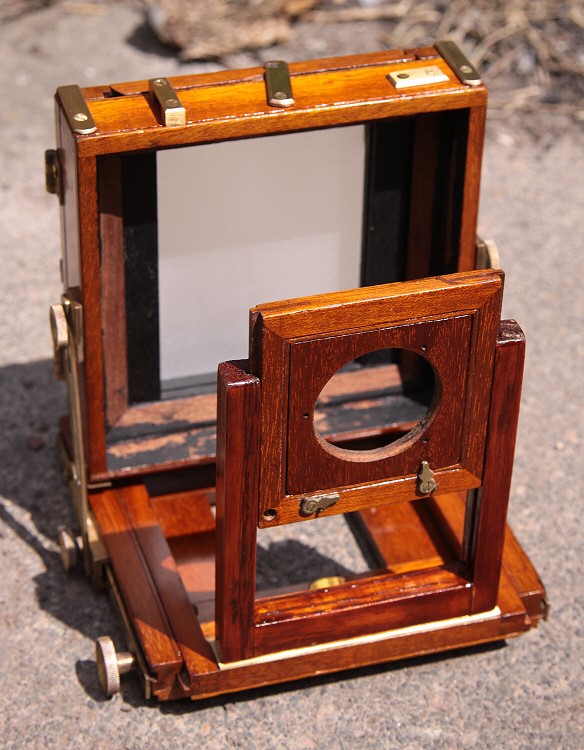
This keys into the front of the focus rail.
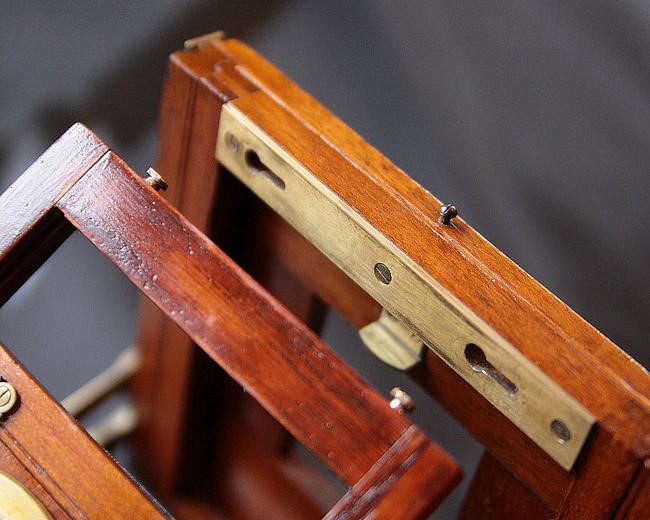
While the standard was being made I had some glass cut and ground anew focus screen, details can be found here on how to make a screen. Once completed it was fitted it to the back. Now I felt the camera could be fully restored, the largest remaining job was the new bellows and brass fittings.
I drew up a bellows pattern in CorelDraw and printed off the folding templates and stiffening struts. The fabric for the bellows was made light proof with acrylic black paint, and based on how I'd repaired and also made shutter cloth in the past when repairing Thornton Pickard shutters. It took about 2 hours work to make the new bellows but subsequent sets would be quicker.
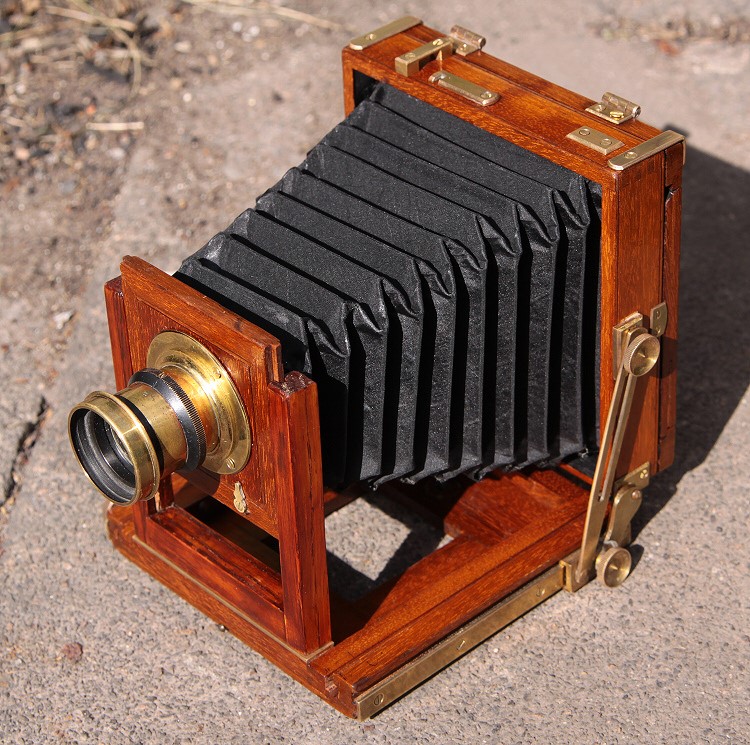
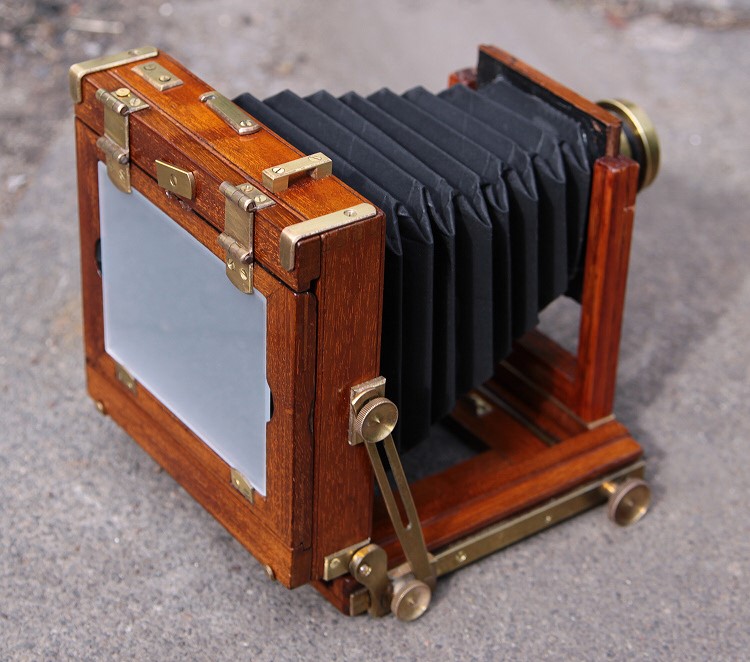
The camera folds compactly.
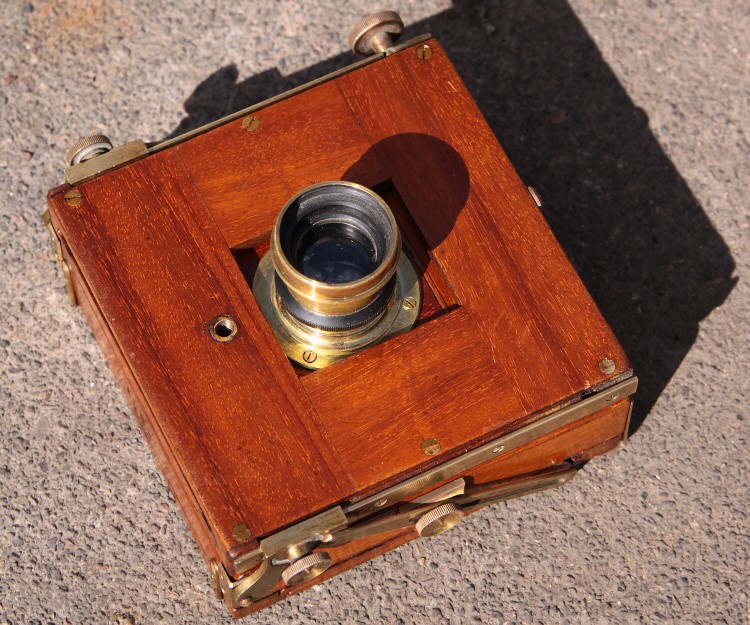
Prototypes for the missing brass parts have been made, but two parts need some slight modifications. I have a Thornton Pickard shutter which fits the front of the lens and a new (second) lens board has also been made and fitted with a coated Rodenstock f3.5 Trinar. In addition an adaptor has been made to fit a 6x7 Graflex roll film back.
So a pre 1900 camera can be used with a modern lens & film without compromising the integrity of the camera itself. The only thing holding up final completion is I can't find brass screws small enough here, so it'll have to wait my next visit to the UK & the rain

Ian











